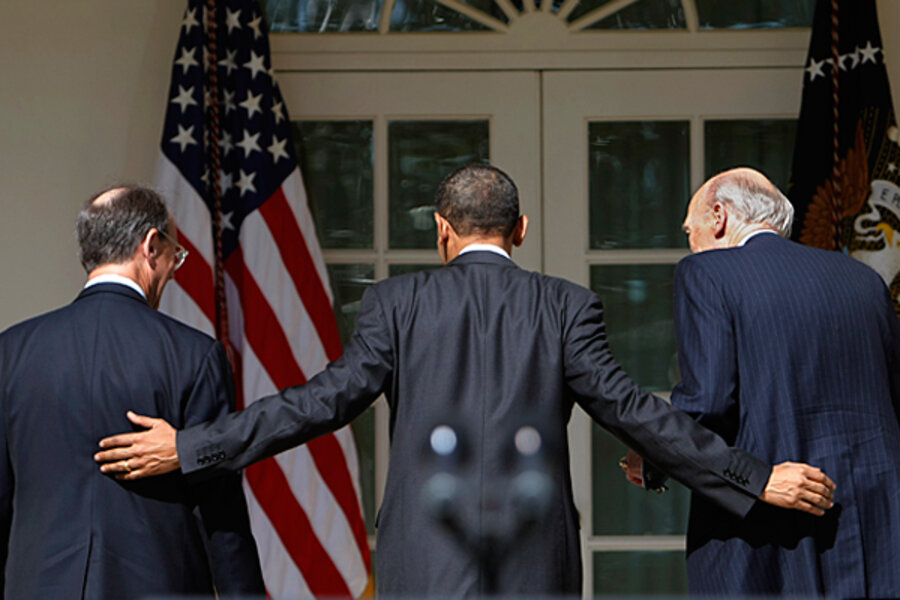Stimulus and tax cuts now, smaller economy later, CBO report says
Loading...
The Congressional Budget Office released an improved outlook for the federal budget deficit this year, but the report also amounted to a warning to President Obama and Congress about the limits of policies designed to stimulate the economy.
On the positive side, the 2010 budget deficit – though gargantuan – is now forecast at $1.3 trillion, or $27 billion lower than what the CBO predicted in March. The deficit is also expected to be $71 billion lower than the deficit posted in 2009, which set a six-decade record for its scale as a percentage of the US economy.
On the sobering side, the same Thursday report suggested that economic stimulants can be harmful to long-term health.
In their report, Congress's nonpartisan budget accountants estimated that maintaining the Bush tax cuts and avoiding cutbacks in government spending would have some positive effects on the economy in the short run. By pumping more money into the economy now, the gross domestic product (GDP) would be larger next year, and unemployment might be about half a percentage point lower.
But, because it would increase the nation's public debt, the boost would come at a price.
"Later in the coming decade, real GDP would fall below the level in CBO’s baseline, because the larger budget deficits would reduce investment in productive capital," the CBO report says.
So more tax-cut and spending stimulus now means a smaller economy later. The government would be eating up resources that could otherwise be used to create private-sector jobs that expand the nation's wealth and productivity.
CBO's cold water
The report offers a cautionary perspective at a time when politicians in both major parties are inclined to extend those tax cuts in whole or in part.
Many economists say now would be the wrong time to impose tax hikes on most Americans, as would occur if the Bush tax cuts expired as scheduled at the end of this year. At the same time, the CBO report reflects the reality that, at some point, a rising federal debt is likely to crimp growth in the economy.
Douglas Elmendorf, director of the CBO, discussed the quandary – that it might be desirable to maintain a relatively stimulative fiscal stance for now while also achieving greater fiscal discipline later this decade.
"To do that ... one needs to develop a somewhat subtle fiscal policy," he said.
In the report, the CBO presented two scenarios that were not subtle at all, as Mr. Elmendorf acknowledged.
If Congress let the tax cuts expire and kept spending constant (after adjusting for inflation) budget gaps would shrink from 9 percent of GDP this year to 3 percent of GDP in 2013. Even so, interest outlays on the national debt would rise from $202 billion (1.4 percent of GDP) this year to $778 billion (3.4 percent of GDP) in 2020. This scenario was the CBO's "baseline."
In the alternative scenario, if Congress extended the tax cuts (and indexing the alternative-minimum tax for inflation) and increased spending at the same pace as GDP, debt-service costs by an additional $236 billion in 2020. The budget deficit would be $517 billion higher in that year than without the tax cuts.
Problems either way
In either scenario, another problem looms beyond 2020. The CBO says that rising costs of health-care programs are likely to put an additional strain on the federal budget.
The tension between long- and short-run goals is easily visible in Washington this year.
Obama has created a bipartisan fiscal commission to generate proposals for tackling the long-run challenge. But even as the commission carries forward with public meetings, members of Congress are locked in election year combat over whether to extend all of the Bush tax cuts.
Obama favors letting taxes revert to Clinton-era levels for the top two tax brackets (households earning $250,000 a year), while Republicans generally want to make all the tax cuts permanent. Some Democrats want to keep all the tax cuts in place at least for a while.





